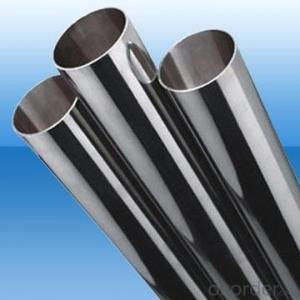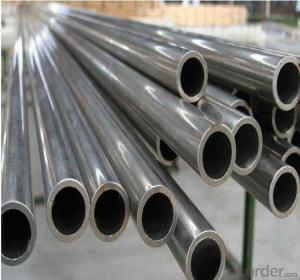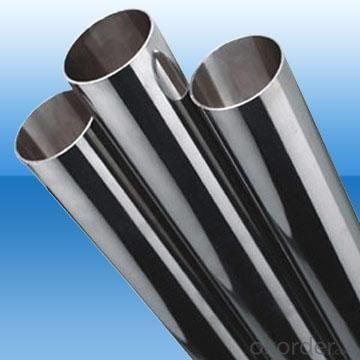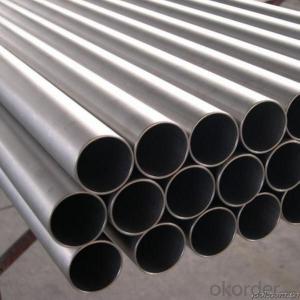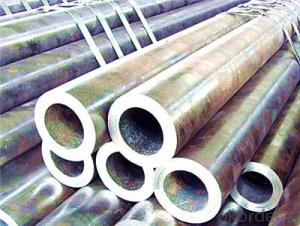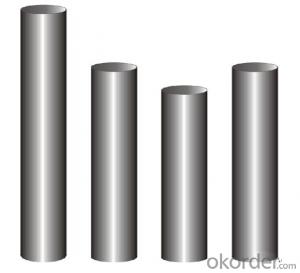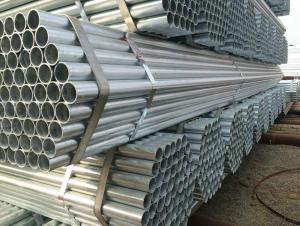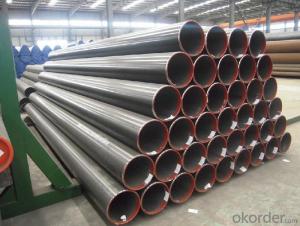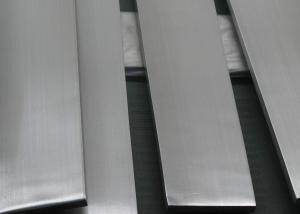Oil Gas Sewage Transport Usage Stainless Steel Pipe Made in China
- Loading Port:
- Tianjin
- Payment Terms:
- TT OR LC
- Min Order Qty:
- 35 m.t.
- Supply Capability:
- 5000 m.t./month
OKorder Service Pledge
OKorder Financial Service
You Might Also Like
Specification
Oil Gas Sewage Transport Usage Stainless Steel Pipe Made in China
1.Structure of Stainless Steel Pipe :
Seamless pipe is formed by drawing a solid billet over a piercing rod to create the hollow shell. As the manufacturing process does not include any welding, seamless pipes are perceived to be stronger and more reliable. Historically seamless pipe was regarded as withstanding pressure better than other types, and was often more easily available than welded pipe.
2.Main Features of the Stainless Steel Pipe :
• High manufacturing accuracy
• High strength
• Small inertia resistance
• Strong heat dissipation ability
• Good visual effect
• Reasonable price
3.Stainless Steel Pipe Specification:
Standard | GB, DIN, ASTM ASTM A106-2006, ASTM A53-2007 |
Grade | 10#-45#, 16Mn 10#, 20#, 45#, 16Mn |
Thickness | 8 - 33 mm |
Section Shape | Round |
Outer Diameter | 133 - 219 mm |
Place of Origin | Shandong, China (Mainland) |
Secondary Or Not | Non-secondary |
Application | Hydraulic Pipe |
Technique | Cold Drawn |
Certification | API |
Surface Treatment | factory state or painted black |
Special Pipe | API Pipe |
Alloy Or Not | Non-alloy |
Length | 5-12M |
Outer Diameter | 21.3-610mm |
Grade | 20#, 45#, Q345, API J55, API K55, API L80, API N80, API P110, A53B |
Standard | ASME, ASTM |
1) Material:20#(ASTM A 106/A53 GRB.API5LGRB,GB),45#,16Mn,10#.
2) Specification range:OD:21.3-610mm,WT:6-70mm,length:6-12m or according to the requirement of clients.
3) Excutive standards:GB,ASME API5L.ASTM A 106/A53,Despite of the above standards,we can also supply seamless steel pipe with standard of DIN,JIS,and so on,and also develop new products according to the requirements of our clients!
4) Surface:black lacquered,varnish coating or galvanized.
5) Ends:Beveled or square cut,plastic capped,painted.
6) Packing:bundles wrapped with strong steel strip,seaworthy packing.
4. Packing and Delivery:
Packaging Details: | seaworthy package,bundles wrapped with strong steel strip |
Delivery Detail: | 50-60days after received 30%TT or Original LC |
5. FAQ of Stainless Steel Pipe
A. How is the quality of your products?
Our products are manufactured strictly according to national and internaional standard, and we take a test on every pipe before delivered out. If you want see our quality certifications and all kinds of testing report, please just ask us for it.
Guaranteed: If products’ quality don’t accord to discription as we give or the promise before you place order, we promise 100% refund.
B. How about price?
Yes, we are factory and be able to give you lowest price below market one, and we have a policy that “ for saving time and absolutely honest business attitude, we quote as lowest as possible for any customer, and discount can be given according to quantity”,if you like bargain and factory price is not low enough as you think, just don’t waste your time.Please trust the quotation we would give you, it is professional one.
C. Why should you chose us?
Chose happens because of quality, then price, We can give you both.Additionally, we can also offer professional products inquiry, products knowledge train(for agents), smooth goods delivery, exellent customer solution proposals.Our service formula: good quality+good price+good service=customer’s trust
SGS test is available, customer inspection before shipping is welcome, third party inspection is no problem.
Any question, pls feel free to contact us !
6.Stainless Steel Pipe Images:
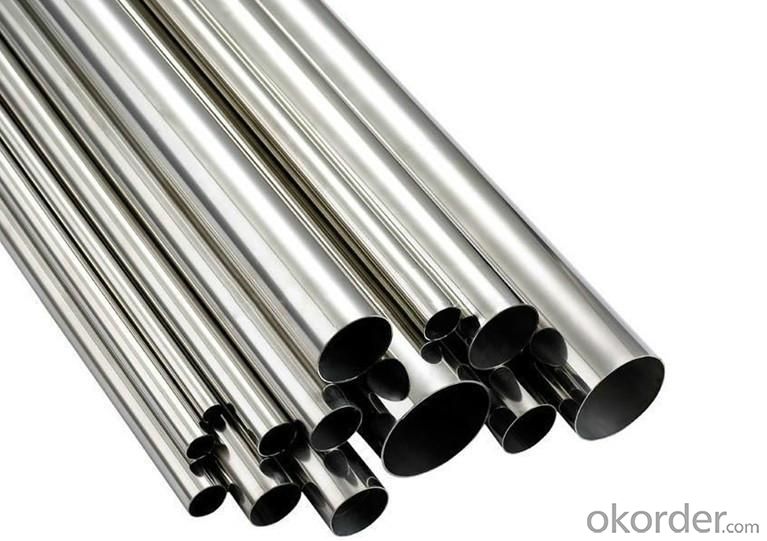
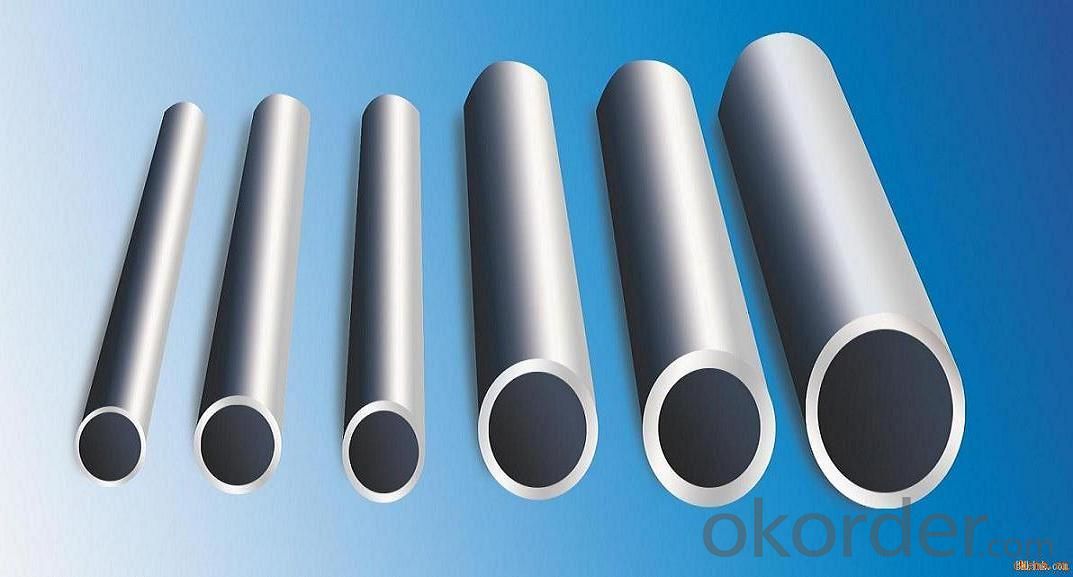
7. Company Information:
CNBM International Corporation (CNBM International) is the most important trading platform of CNBM Group Corporation, a state-owned company under the direct supervision of State-owned Assets Supervision and Administration Commission of the State Council.
In line with the business, CNBM International launched E-business platform Okorder.com.Our goal is to transform CNBM International into the global leading brand in building materials industry within 3 to 5 years through innovation and reform, by strengthening the overall management of supply chain, developing and cultivating both domestic and overseas market, improving the procedure and information system, enhancing the ability to organize resources and to provide value-added services under a professional team and a learning organization.
- Q: How can the inner walls of stainless steel tubes be polished?
- 1) (used in polishing the inner surface polishing machine): rod is thrown into the tube to drive the impeller 1000 or homemade abrasive wheel rotating speed, and with the rotation of the polishing pipe itself, while rotating slowly forward throwing rod. Generally speaking, first use the 60#-80# wheel of Chiba or abrasive belt wheel for rough throwing, and then gradually fine throwing with high precision according to the requirement of smoothness. Large size pipe 6, more than the general use of thousands of impeller, small size of the pipe can be made with homemade abrasive belt wheel, you can reduce costs.
- Q: How do you prevent blockages in stainless steel pipes?
- To prevent blockages in stainless steel pipes, regular maintenance and proper usage are crucial. Some effective measures include avoiding the disposal of grease, oil, or large solid objects down the drain, using drain covers or strainers to catch debris, and periodically flushing the pipes with hot water or a suitable cleaning solution to remove any buildup or residue. Additionally, ensuring proper installation and avoiding excessive pressure or temperature fluctuations can help maintain the integrity of the pipes and prevent blockages.
- Q: Are stainless steel pipes suitable for power plants?
- Yes, stainless steel pipes are suitable for power plants. Stainless steel is a corrosion-resistant material that can withstand high temperatures and pressures, making it an ideal choice for power plant applications. Power plants often handle fluids and gases at elevated temperatures and pressures, and stainless steel pipes offer excellent resistance to corrosion, erosion, and oxidation in such conditions. Additionally, stainless steel pipes have a long lifespan, require minimal maintenance, and offer good mechanical properties, making them reliable for power plant operations.
- Q: 316 stainless steel pipe wall mirror polishing, the smaller the roughness, the better.
- From what you have described above, the difficulty lies in the roughness of the interior.You choose to finish the stainless steel tube, 2-3 finishing tubes, and then polished by solid polishing agent.
- Q: Can stainless steel pipes be cold worked?
- Indeed, cold working is a viable option for stainless steel pipes. By subjecting the metal to deformation at normal temperatures, without any heating prerequisites, the desired outcomes can be achieved. Given the malleable and adaptable nature of stainless steel, shaping and sizing through cold working can be effortlessly accomplished. Techniques like bending, flaring, swaging, and drawing can be effectively employed to meet precise specifications when it comes to stainless steel pipes. Moreover, cold working not only augments the steel's robustness and rigidity but also renders it suitable for diverse applications in sectors such as construction, automotive, and manufacturing.
- Q: How are stainless steel pipes measured?
- Two main parameters are used to measure stainless steel pipes: outer diameter (OD) and wall thickness. The outer diameter corresponds to the pipe's outer circumference, while the wall thickness indicates the thickness of the pipe's walls. These measurements are crucial for determining the pipe's suitability for a particular application and ensuring compatibility with fittings and connectors. Stainless steel pipe dimensions are typically stated in millimeters or inches, and they may vary depending on project requirements or industry standards. Precise measurement is essential to guarantee the correct fitting and functionality of stainless steel pipes in diverse applications, including plumbing, construction, or industrial processes.
- Q: What are the different grades of stainless steel pipes?
- There are several different grades of stainless steel pipes available, each with its own unique properties and applications. The most commonly used grades include: 1. Grade 304: This is the most widely used stainless steel grade for pipes. It offers excellent corrosion resistance, good heat resistance, and high strength. Grade 304 is suitable for a wide range of applications, including water pipes, food processing equipment, and architectural structures. 2. Grade 316: This grade is known for its superior corrosion resistance, particularly in environments with high chloride content. Grade 316 pipes are often used in marine applications, chemical processing plants, and medical equipment where resistance to pitting and crevice corrosion is crucial. 3. Grade 321: This grade is stabilized with titanium, which makes it resistant to intergranular corrosion after exposure to high temperatures. Grade 321 pipes are commonly used in applications involving elevated temperatures, such as exhaust systems, furnace parts, and heat exchangers. 4. Grade 409: This grade is specifically designed for high-temperature applications such as automotive exhaust systems. It offers good heat resistance and is highly resistant to corrosion and oxidation. 5. Grade 904L: This grade is a highly alloyed austenitic stainless steel that provides excellent resistance to a wide range of corrosive environments, including sulfuric acid, phosphoric acid, and chloride solutions. Grade 904L pipes are often used in chemical processing plants, pulp and paper industry, and desalination plants. It is important to select the appropriate grade of stainless steel pipe based on the specific requirements of your application to ensure optimal performance and longevity.
- Q: Stainless steel tube, also known as why tube?
- Production methods can be divided into two categories: seamless pipe and welded pipeSeamless steel pipe can be divided into hot-rolled pipe, cold rolled tube, cold drawn tube and extruded tubeWelded pipe is divided into straight welded pipe and spiral welded pipe and so on
- Q: How do stainless steel pipes compare to plastic pipes?
- Stainless steel pipes and plastic pipes possess distinct qualities that differentiate them in terms of durability, flexibility, cost, and environmental impact. Concerning durability, stainless steel pipes exhibit high resistance to corrosion, rust, and extreme temperatures, making them well-suited for both indoor and outdoor applications. Conversely, plastic pipes are susceptible to degradation caused by UV exposure, chemical reactions, and high temperatures, potentially resulting in leaks or ruptures over time. Flexibility is another critical aspect to consider. Stainless steel pipes are inflexible and not ideal for installations that necessitate bending or maneuvering around obstacles. In contrast, plastic pipes offer great flexibility, easily bendable or curved, allowing for convenient installation in complex or tight spaces. Cost often plays a determining role when choosing between stainless steel and plastic pipes. Initially, stainless steel pipes tend to be more costly due to higher raw material and manufacturing expenses. However, they boast a longer lifespan and require less maintenance, balancing out the initial investment. On the other hand, plastic pipes are generally more affordable but may necessitate frequent replacements or repairs, leading to cumulative costs over time. Finally, environmental impact is a crucial factor in today's environmentally conscious world. Stainless steel pipes are recyclable and possess a lengthy life expectancy, minimizing waste and reducing the need for replacements. Conversely, plastic pipes, despite being partially recyclable, often end up in landfills due to their shorter lifespan and limited recycling capabilities. Consequently, stainless steel pipes are deemed more environmentally friendly. In conclusion, stainless steel pipes offer superior durability, corrosion resistance, and long-term cost-effectiveness. However, plastic pipes are more flexible, initially more affordable, and suitable for specific applications. Ultimately, the selection between stainless steel and plastic pipes depends on the project's specific needs, budget, and environmental considerations.
Send your message to us
Oil Gas Sewage Transport Usage Stainless Steel Pipe Made in China
- Loading Port:
- Tianjin
- Payment Terms:
- TT OR LC
- Min Order Qty:
- 35 m.t.
- Supply Capability:
- 5000 m.t./month
OKorder Service Pledge
OKorder Financial Service
Similar products
Hot products
Hot Searches
Related keywords
